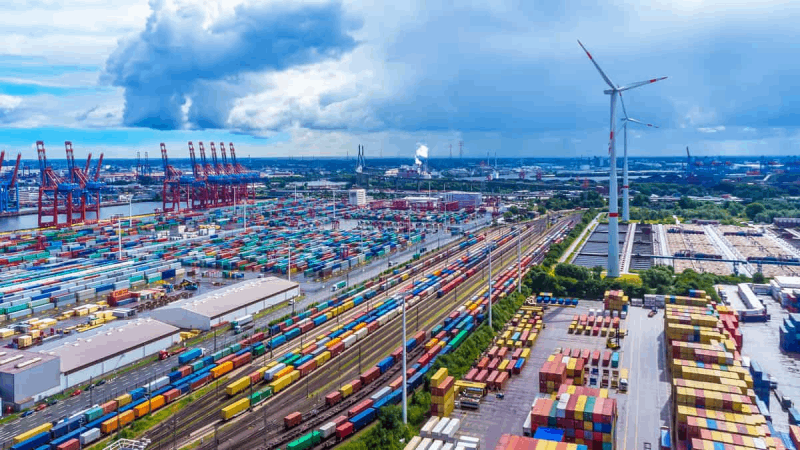Welcome to GLA! Leading the global logistics alliance.


Your location:Home > News > New ship orders hit a record high! Will the ship market maintain this state?
Time:2021-07-06 Publisher:Kevin Num:6960
The 25 billion USD container ship "order wave" pushed the global new ship orders in the first half of the year to a 7-year high.
However, this unprecedented "order wave" seems to be slowing down.
The rapid increase in ship prices and fewer and fewer shipyards have allowed the market to move from "excitement" to "coolness."
For most shipyards with insufficient orders, it may be more important to pay attention to the demand for ship types in the future market.

New ship orders hit a 7-year high, and container ships dominate
According to Clarkson’s statistics, the number of new ship orders in the first year reached 23.8 million CGT for a total of 52 billion U.S. dollars, the highest level since 2014.
At the same time, the data has exceeded the 21.9 million CGT for the whole year of 2020, totaling 47.5 billion US dollars.
However, the current hand-held orders account for only 8% of the existing fleet capacity, which is still close to historical lows.
In fact, the main reason for the increase in new ship orders is the overall improvement in the shipping market, especially the container ship market.
In the first year, the Clark Sea Index reached an average of US$21,717, the highest level of semi-annual data since 2008.
Among the orders for new ships in the first year, container ships accounted for more than half of the total, with a total of 12.7 million CGT and US$25 billion.
In contrast, orders for oil tankers and bulk carriers are only 3.5 million CGT and 2.5 million CGT.
The shipyard also said that the current container ship inquiry is still continuing, mainly in the field of new Panamax and small and medium-sized ships.
But the tanker market continues to be weak and the prospects are full of uncertainties.
Although the ship market was good in the first year, ship brokerage companies believe that new ship orders will tend to flatten out.
One of the reasons is that rising ship plate prices have caused shipyards to increase the price of newbuildings accordingly.
On the other hand, the delivery schedule of major shipyards in China is basically full, and equipment manufacturers have also reached their maximum production capacity.
The Baltic International Chamber of Shipping (BIMCO) does not seem to be optimistic about the level of orders this year.
BIMCO pointed out in its latest analysis and forecast that although the number of new container ship orders this year is at a high level, global shipyards are still facing the pressure of insufficient orders.
Based on the current pace of market order growth, it is estimated that the overall new ship orders in 2021 will be the third lowest level in the past 12 years.

Fleet growth will slow down in the next 5 years
BIMCO pointed out that at the beginning of 2021, the global merchant fleet had 74,505 ships, covering 11 major ship types.
It also provides a high-growth scenario and a low-growth scenario to consider the impact of varying degrees
Among them, it is predicted that the global fleet will grow at an annual growth rate of 0.75% in the next five years under the low-growth scenario, and an average of 567 ships will be added each year.
In the high-growth scenario, BIMCO predicts that the annual growth rate will reach 1.75% in the next five years.
According to BIMCO's forecast, among the 11 main ship types in the next five years, the highest growth rate of the fleet may be LNG ships.
At present, the global LNG fleet has a total of 593 ships, 85% of which have a capacity between 100,000 and 200,000 cubic meters.
BIMCO predicts that under the baseline scenario, the compound annual growth rate of the LNG fleet will reach 6.7%, and the final fleet will increase to 819 by the end of 2025.
Under the low-growth scenario, the total fleet may eventually reach 799 ships, and under the high-growth scenario, the total fleet will reach 839 ships.
In addition, the cruise fleet will also grow substantially in the next five years.
Although cruise ships are the second smallest ship type in the global merchant fleet, BIMCO predicts that the annual growth rate of the cruise fleet will reach 4.2% in the next five years.
BIMCO also pointed out that the growth of the fleet will directly affect seafarers and the industry, as well as the expected demand for seafarers.
2019 the 7th GLA Panel Discussion Wonderful Review
Prev:New Golden Member From Italy—— NUMBER 1 INTERNATIONALNext:New Golden Member From Japan—— JAGRO TRANS CO.,LTD.
Recommended Membership
Latest News